I came to Paris on hot summer days, no different from Saigon. The city known as the most romantic in the world is still the same, full of pitfalls.
The Eiffel Tower is surrounded by street vendors, so just enjoy the view and ignore the solicitations. There are also groups of gamblers whose "colleagues" pretend to be gamblers to lure tourists. And finally, remember to carry your backpack properly: "what's in front is yours, what's behind is someone else's." In a report earlier this year, Paris, France was ranked among the top pickpockets, along with Venice, Italy and Barcelona, Spain.
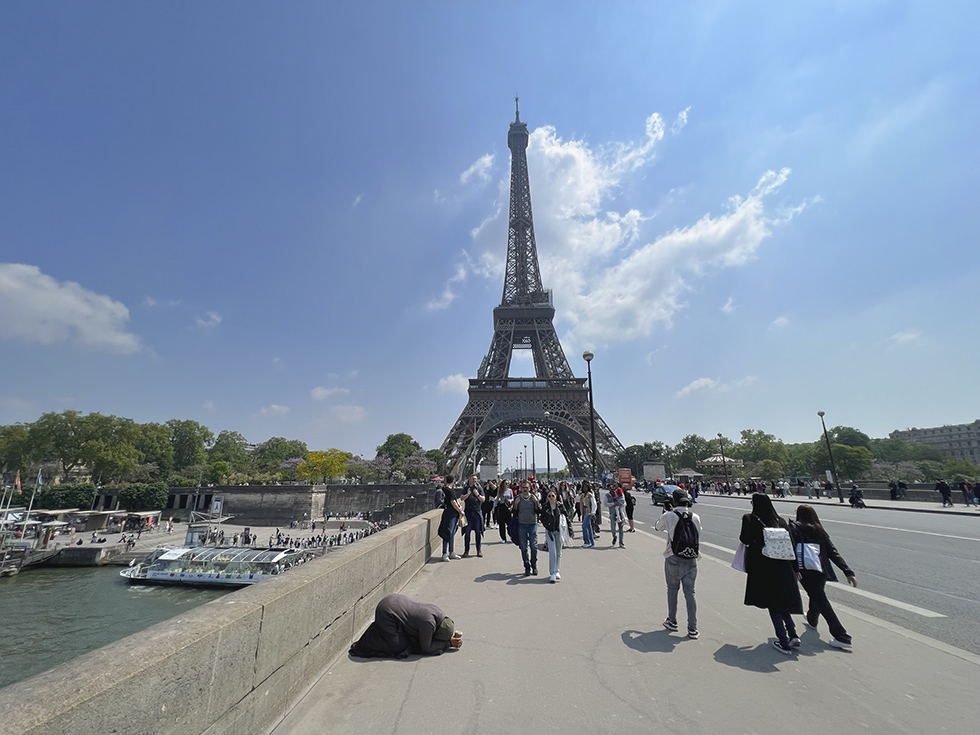
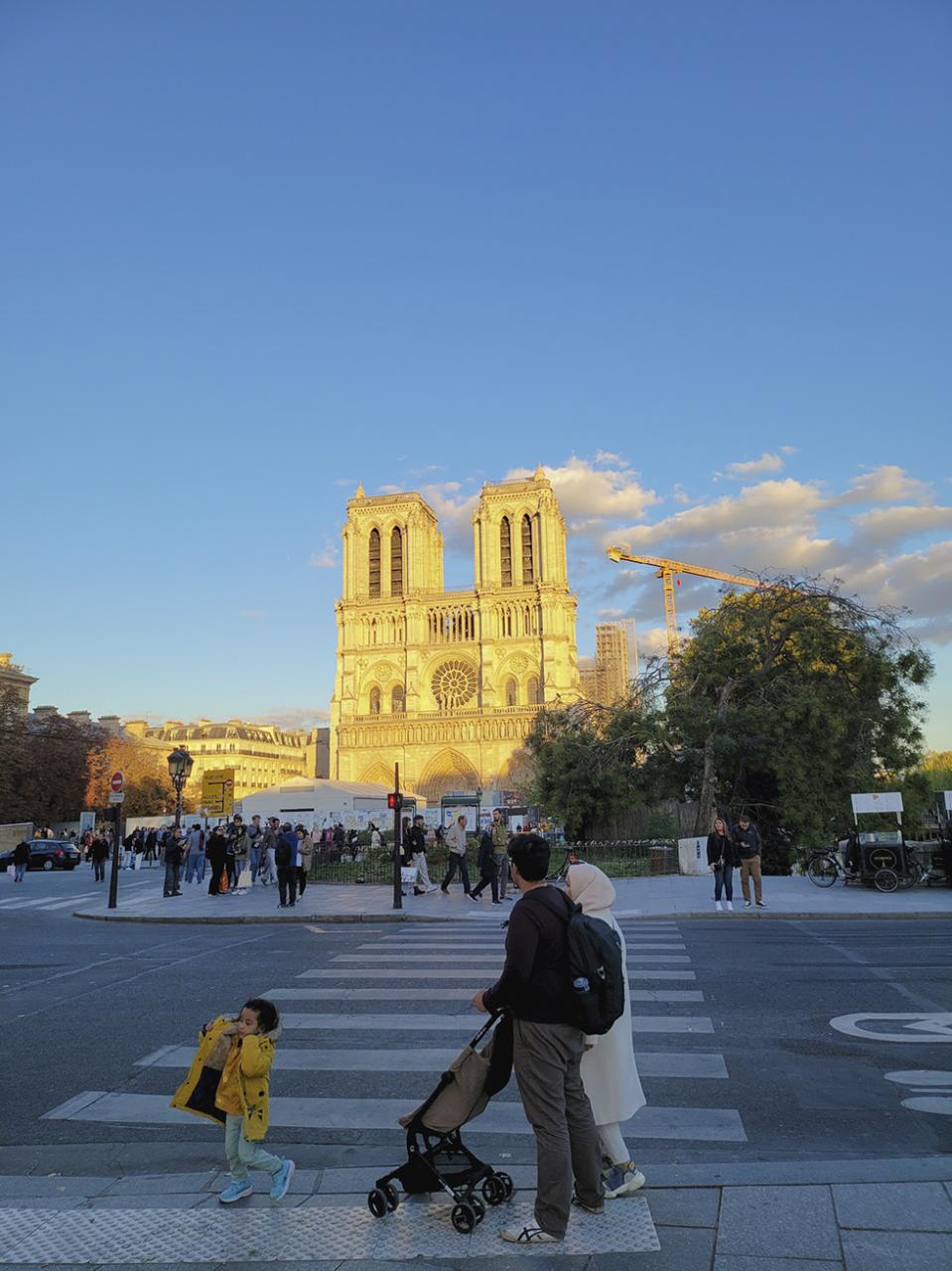
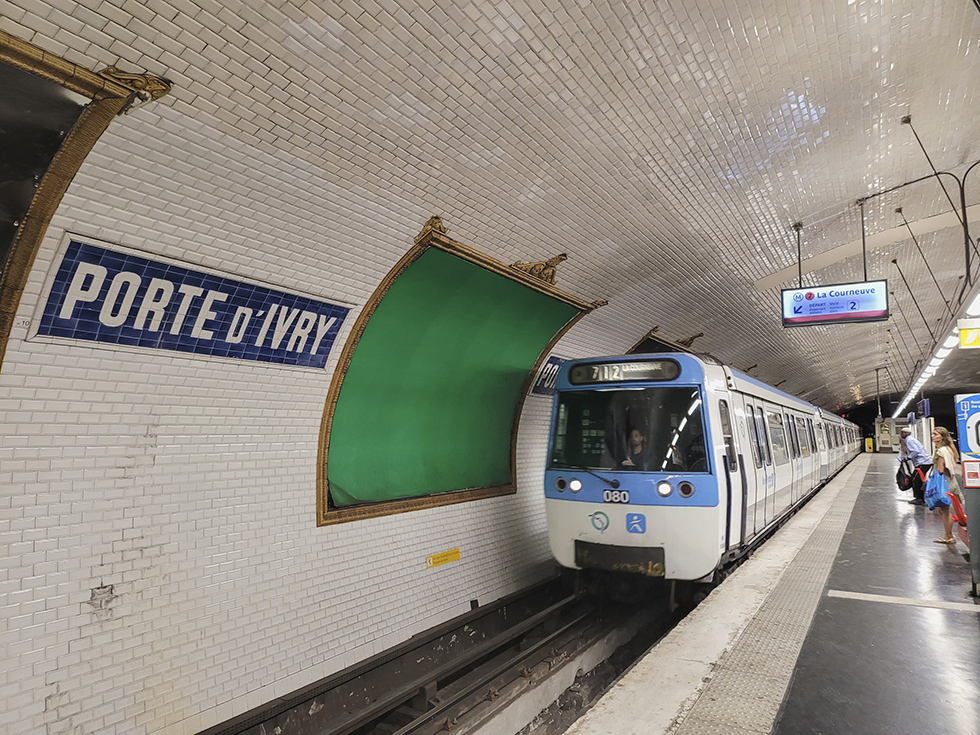
Paris's metro trains are convenient for getting to your destination, but beware of pickpockets on the crowded trains. Here, a beggar kneels on the Pont d'Elena bridge opposite the Eiffel Tower.
NT TAM
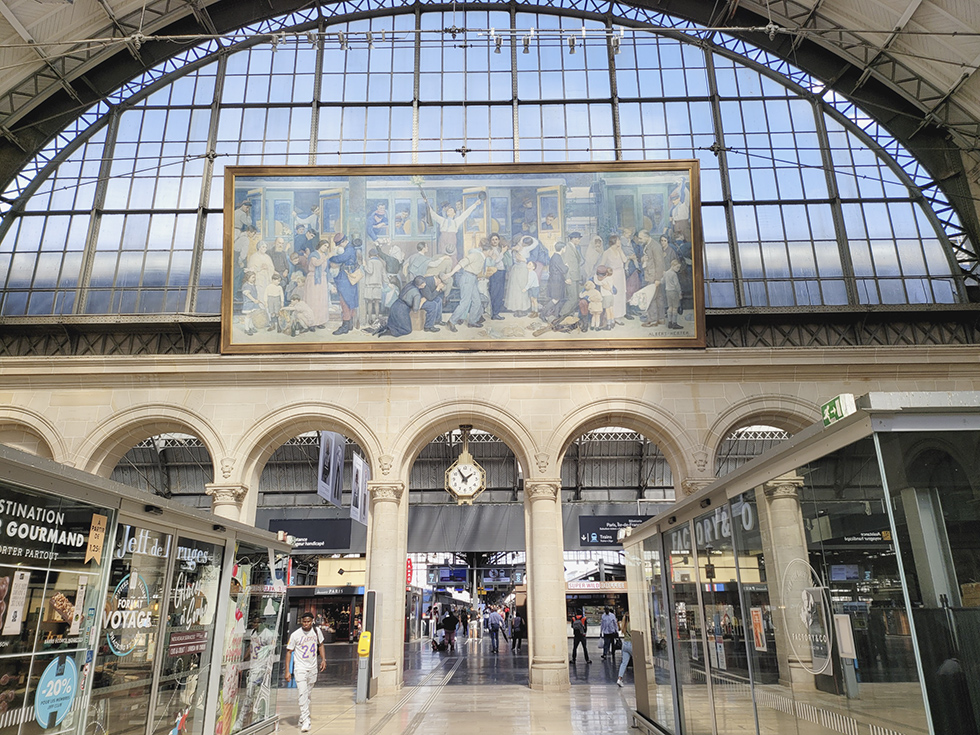
Architectural space at the Central Station East of Paris, one of the busiest stations in the capital, where visitors can travel directly to Charles de Gaulle airport
NT TAM
My European backpacking trip this time went through the following countries: France - Netherlands - Germany (Berlin) - Poland - Norway - Sweden - Denmark - Czech Republic - Germany (Frankfurt - to fly back to Vietnam). Except for the long distances and limited time such as Poland - Norway, Denmark - Czech Republic, which required flying; or the routes without trains such as Norway - Sweden, which required taking a bus, for almost the entire trip, I used the cross-country train or subway in each country.
Having traveled many times by plane within Europe before, I have enough experience to know that 5 hours on the train is equal to 1 hour on the plane, because you also have to go to the airport first to check in and also the time to get to the city center (because the airport is often far from the center).
But booking train tickets is not easy, especially in the summer because this is also the peak tourist season. I booked a ticket from Paris to Amsterdam a month in advance but there was only a late flight at 6pm, and the ticket price was quite high, up to 120 euros (about 3.1 million VND) for a 3-hour journey, the same as a plane ticket.
Train ticket prices across Europe are not fixed, expensive or cheap depending on the time of booking, train schedule, class of carriage, and number of seats.
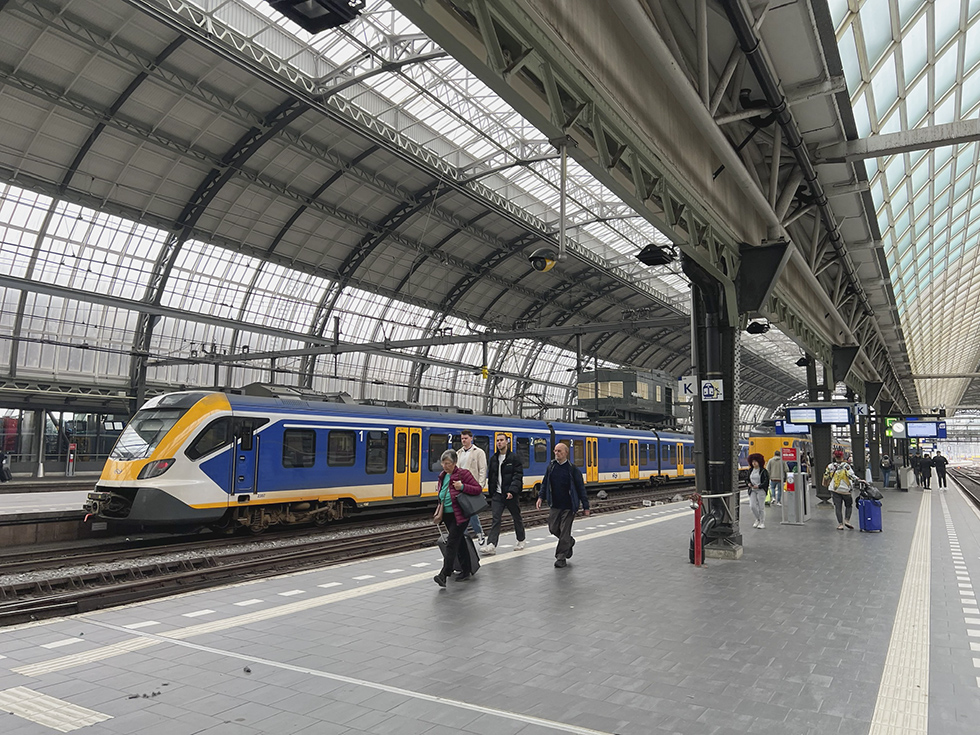
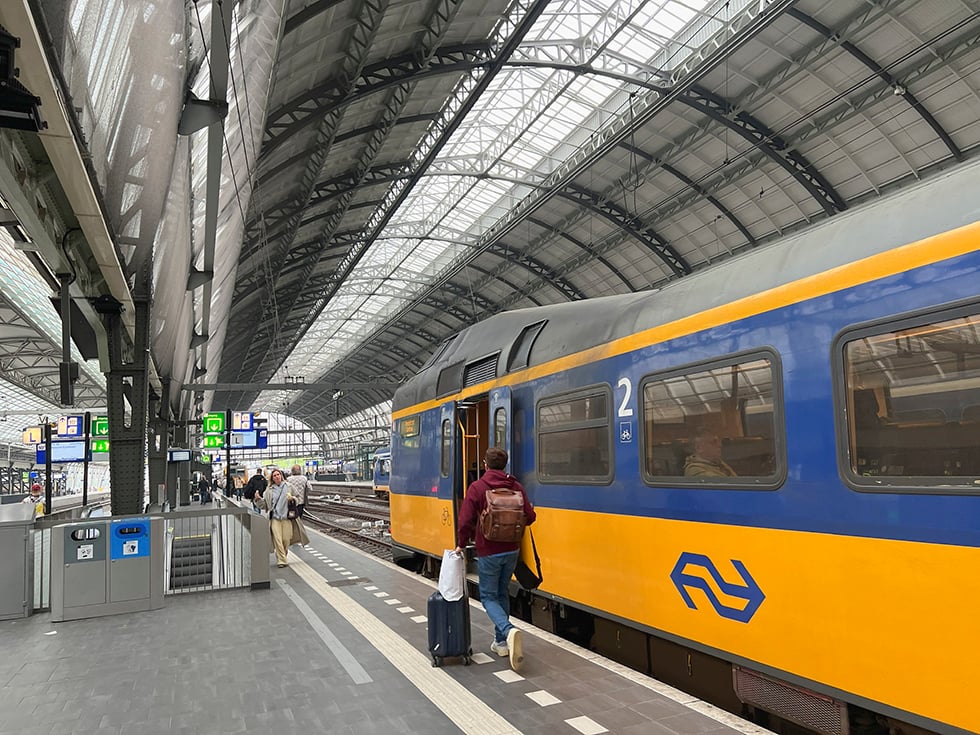
The train took me from Paris to Amsterdam.
NT TAM
To catch the train to Amsterdam, I had to buy a ticket for a leg within France and then travel from Paris Central Station back to Charles de Gaulle Airport. From there, I boarded a high-speed train to the Dutch capital, crossing Belgium. The train tapped steadily on the tracks, passing by rows of deserted houses with few people in the late afternoon, then accelerated into the deserted countryside.
Soon the ship entered Amsterdam.
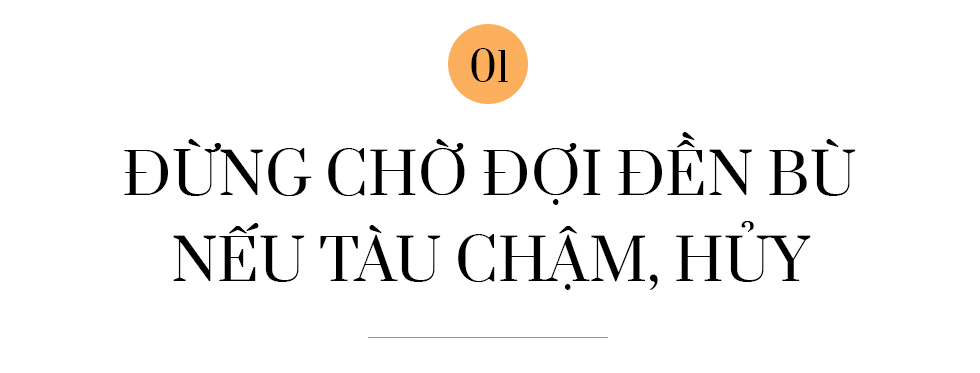
Amsterdam Central Station is an old building, typical of the Neo-Renaissance architecture common in Europe, built in the 18th century. Step out of the station, cross the canal, and Amsterdam is a different world. That is the "specialty" of the destination: the Red Light District.
In recent years, the Netherlands has sought to eliminate this "specialty" by restricting tourists from coming by increasing hotel prices. A room near the red light district, "nothing special" can cost up to 200 - 300 euros/night. The city has also introduced many new regulations, in order to escape the name "sin city" that has been associated with it for decades.
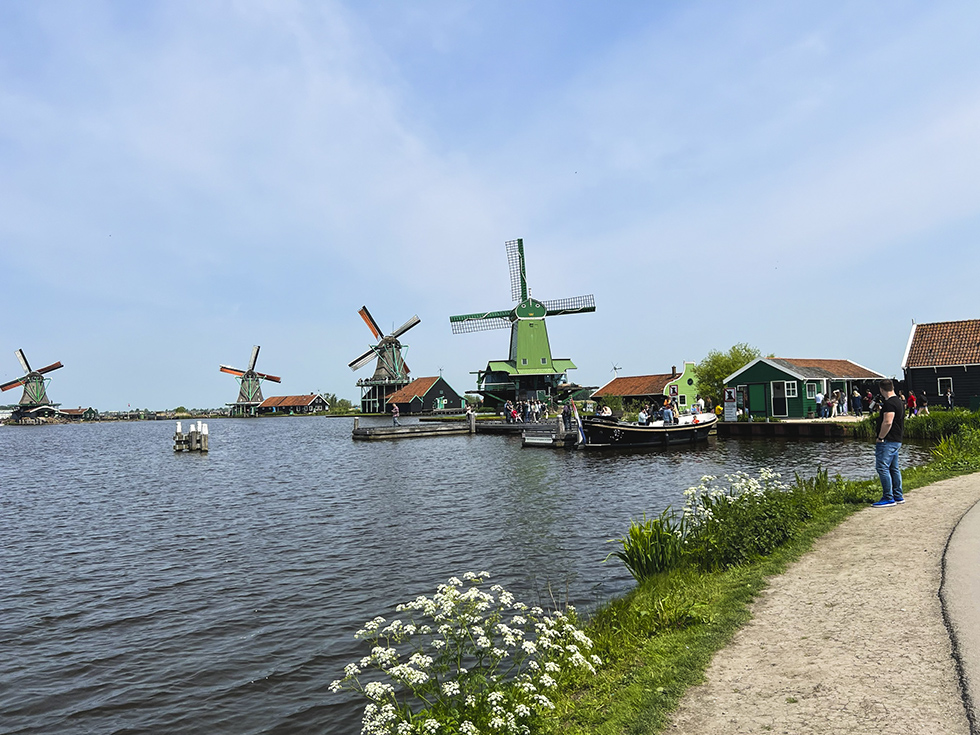
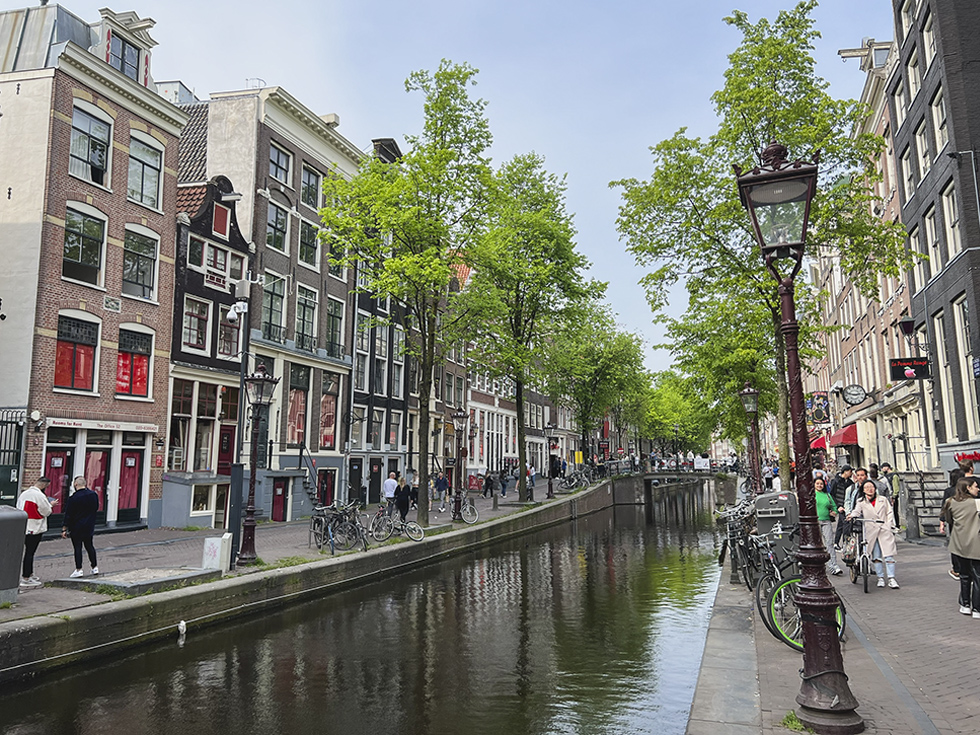
The contrasting beauty of the Netherlands, with its iconic romantic windmills and canals in the mundane red-light district
NT TAM
After 3 days, I left Amsterdam for Berlin. Initially, my journey to "backpack" part of Europe by train did not go to Germany, but because I wanted to go to Poland, I was forced to stop in Berlin. I boarded the train at 3pm (ticket price 100 euros), planning to arrive at 7pm, worried because the train company had announced a strike by German international train staff. Passengers had to change their itinerary, or postpone the date, or accept losing time if they continued to travel during the strike week.
The train that entered the German border immediately stopped at the first station. There, we had to wait another 2 hours for the domestic German train to Berlin because the international train was no longer running. That is, only the employees of the international German train company were on strike inside Germany, while the domestic train was running normally.
In the waiting room, I met Mr. Hung, a Vietnamese living in Munich, and he explained why the German railway authority did not apologize for the inconvenience. "Once, on the train home, when it was 200 km away, there was a technical problem and the train had to stop. However, the passengers were not told when the train would run again and after waiting for 2 hours, he and his friends had to take a taxi to the nearest station to continue their journey. There was no compensation. Just like the strike, the railway company only announced it online, leaving the rest up to the passengers," Mr. Hung said.
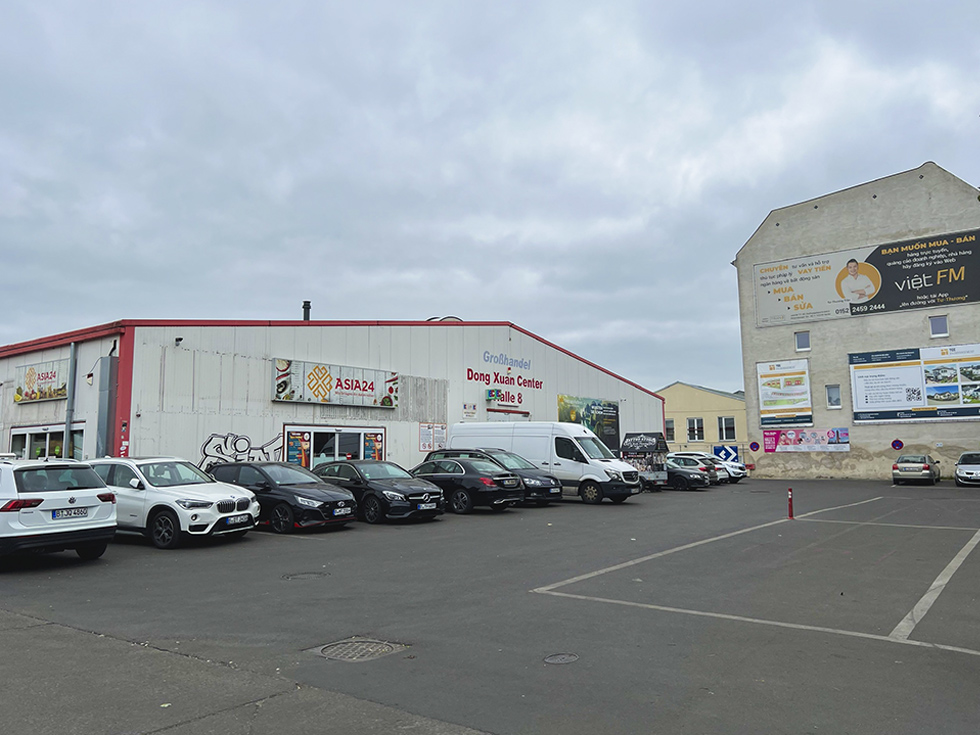
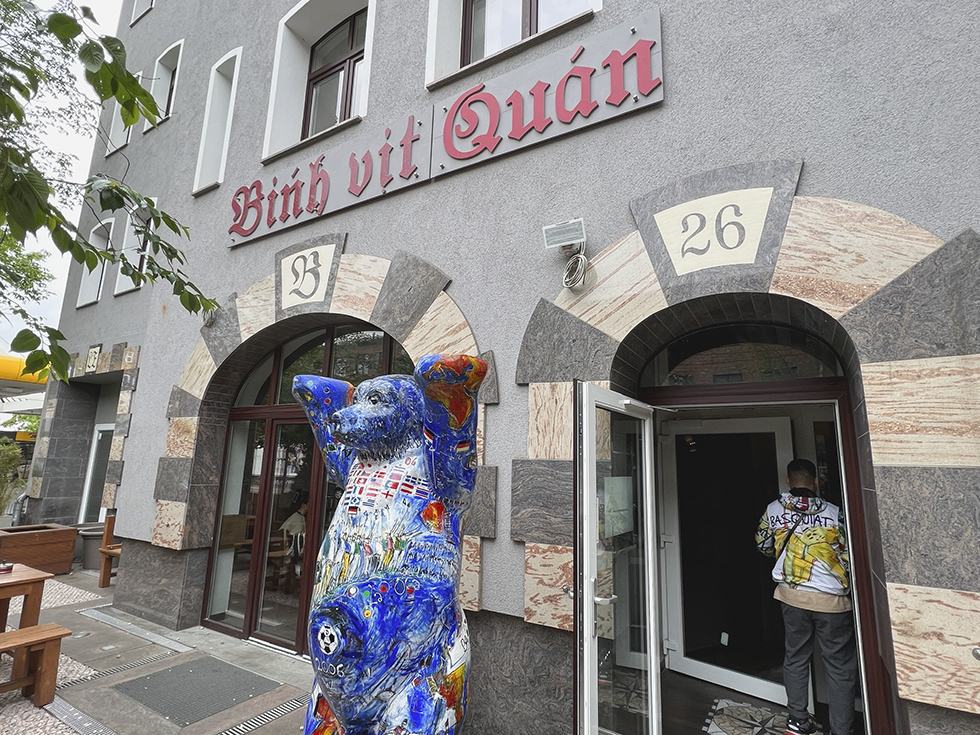
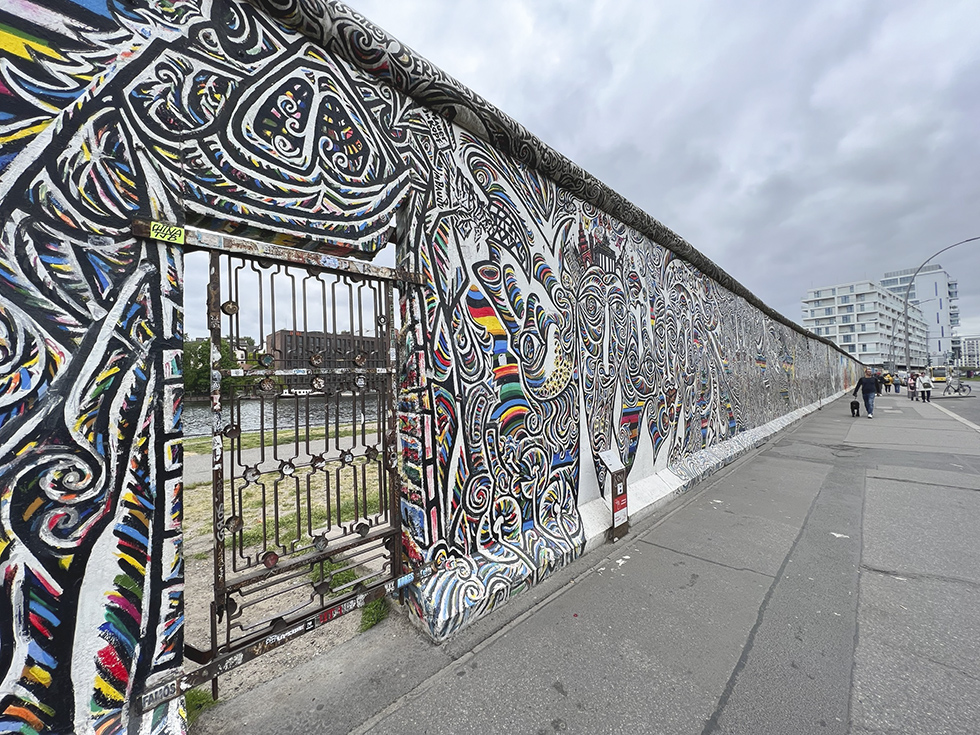
In Berlin, don't forget to take the underground train, which takes 30 minutes, to Dong Xuan Market, one of the largest Vietnamese markets in Europe with full food and drinks just like the markets in your hometown. From Dong Xuan Market, you can also easily visit the Berlin Wall.
NT TAM
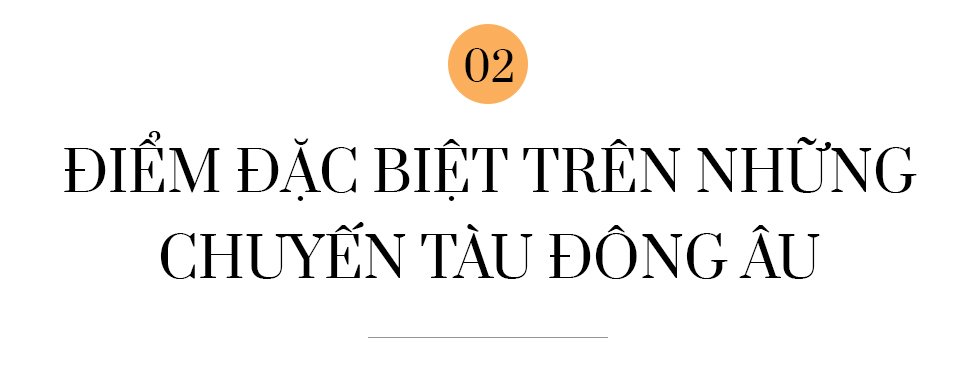
That day, I boarded the Polish train to Warsaw from Berlin at 3 p.m., a 5-hour journey. In summer, Europe gets dark late and the sky is clearer. After about 2 hours, the train entered Poland.
On the Polish express train, tourists will also be surprised to see staff pushing carts selling food and drinks and inviting each tourist. Similarly, on the route from the Czech Republic to Germany, there are also people selling food on the train. This is different from the trains I have been on before in Western Europe such as from Venice to Rome, or from Paris to Amsterdam... tourists who want to eat must go to the restaurant car.
Entering Poland, the train began to pass through fields of rapeseed in full bloom, stretching as far as the eye could see. Rapeseed is widely grown in European countries, mainly for its seeds, which are used to produce oil or mustard.
When traveling by train across Europe, borders seem to be non-existent. You can only tell by the scenery along the way or the signs announcing the next station.
However, in some cases, you will see police on the train, especially when passengers from poor countries go to richer countries. This is the border of European countries. Suppose you go from Germany to Poland, no one will check your passport or documents, but if you go the other way, when you enter Germany, the police will be there, checking each passenger.
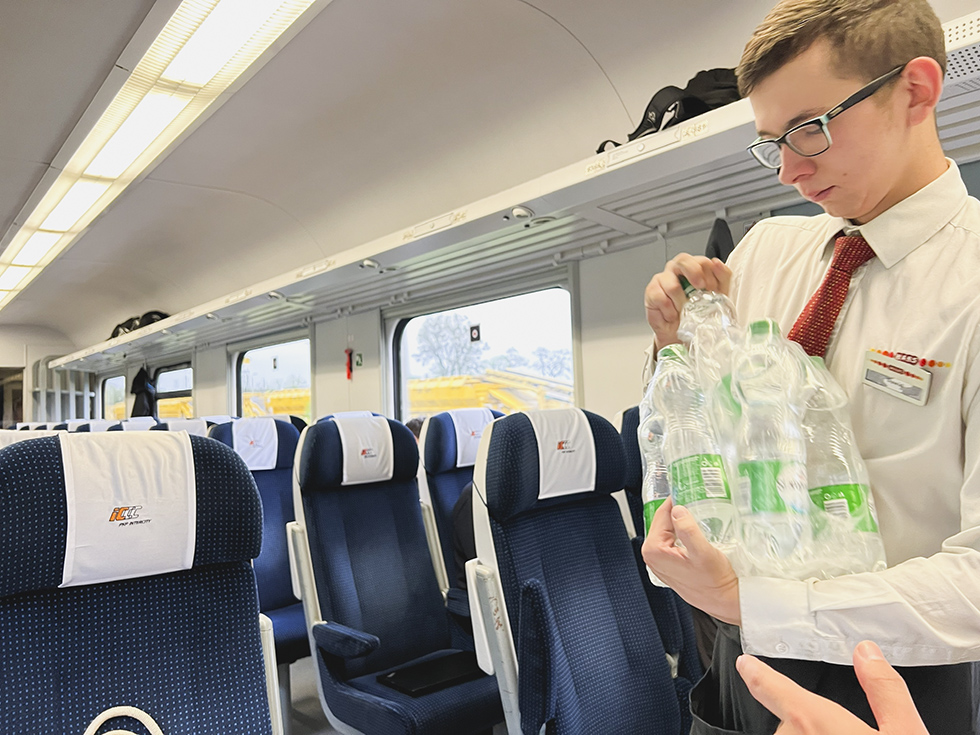

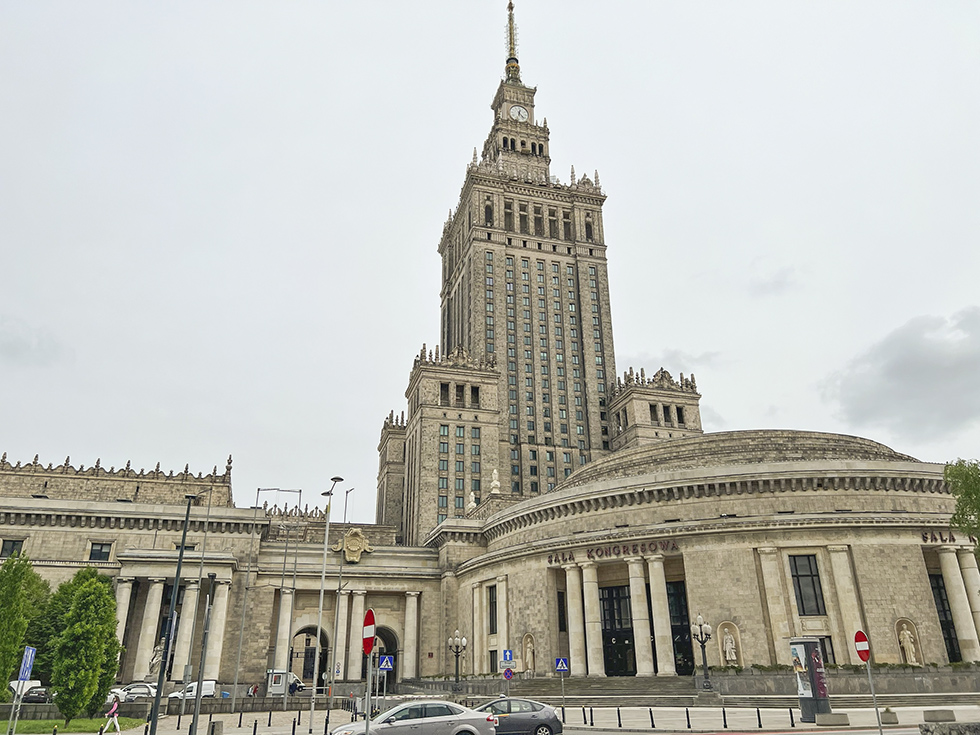
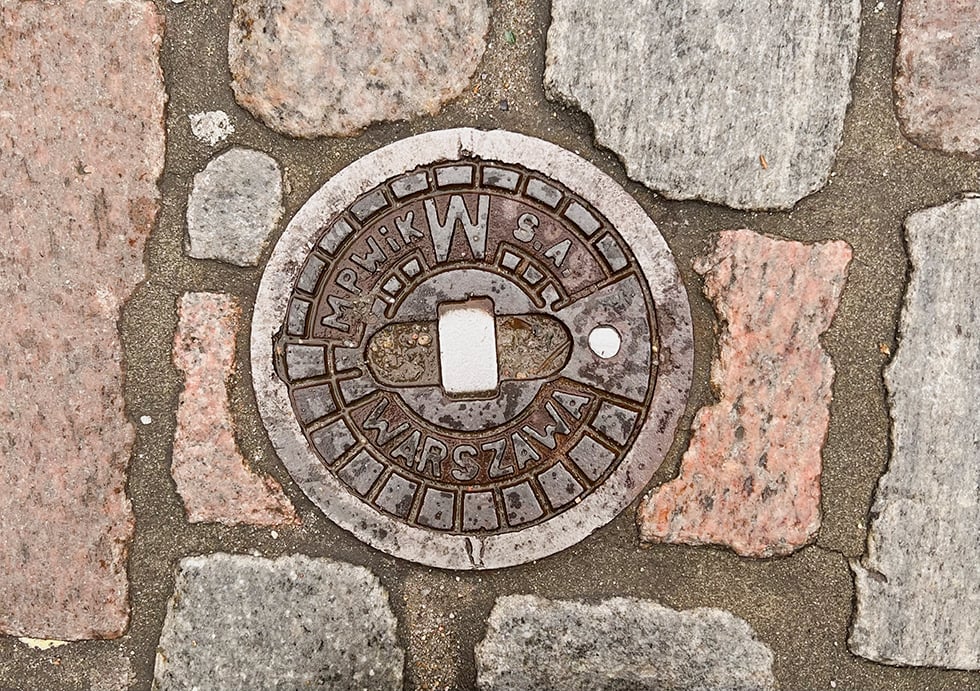
The train from Germany to Poland is quite deserted, with some carriages having only 1-2 people and passengers not having to go to the restaurant car to buy drinks. Popular destinations in the Polish capital are the old town and the towering astronomy building in the center.
The capital of Poland, Warsaw, is mostly newly built with high-rise buildings, quite far from the old town. If you want to find Vietnamese food, the capital of Poland might be the perfect place. The restaurants here operate in a very simple style, go to the counter, there is a large board above each dish with pictures and prices, then choose the dish, pay and return to the table to wait for the bell to ring.
I left Poland on a Ryanair budget flight to Oslo, Norway. The flight took two hours and cost 125 euros. Like many other budget airlines, Ryanair - considered Europe's largest - charges exorbitant fees for checked baggage and hand luggage is weighed to the gram. It's also common to see passengers rummaging through their luggage to shed some pounds before checking in.
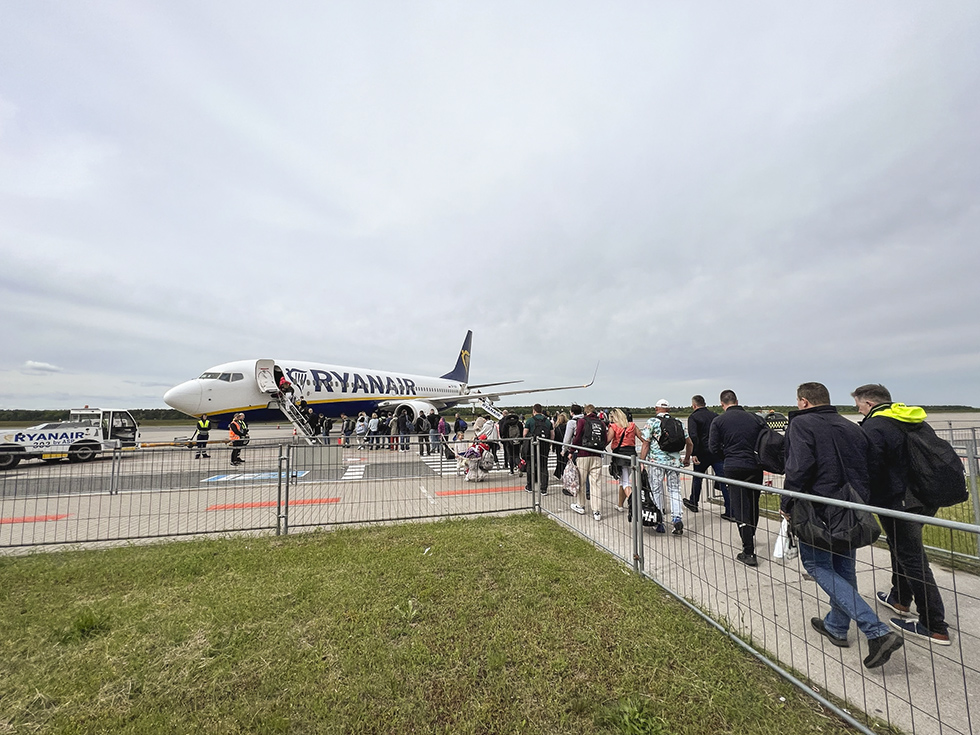
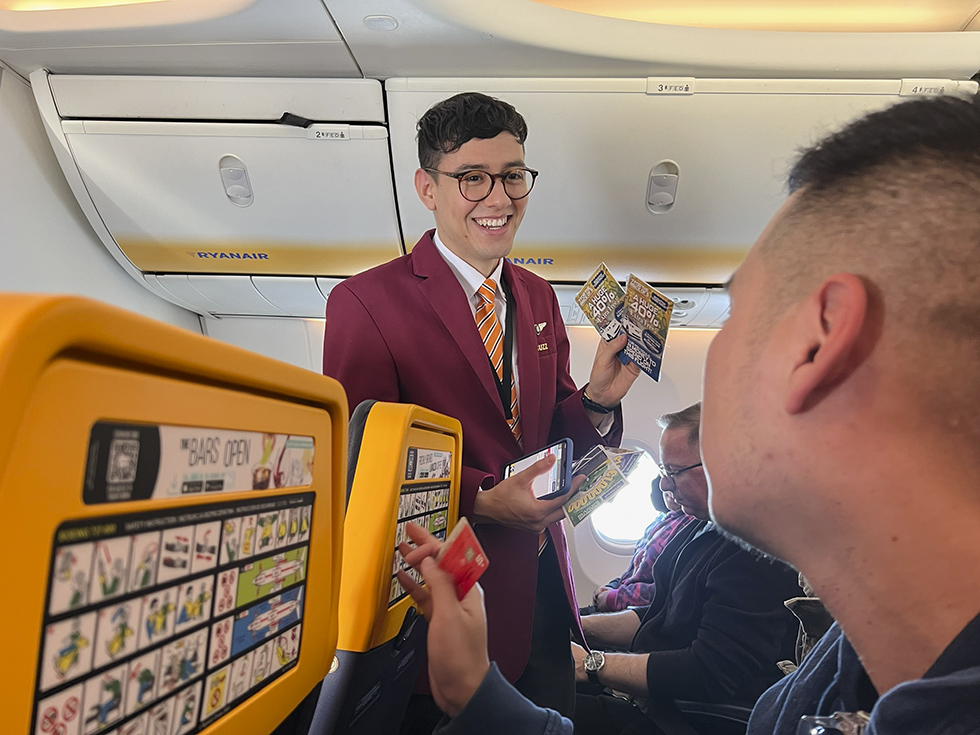
Passengers board flights by foot at Warsaw's largest airport. On board, travelers can also buy lottery tickets.
NT TAM
Although it was an international airport, passengers on that flight had to walk quite a distance from the terminal to the plane. Walking to the plane at international airports in European countries is not uncommon. Once, flying from France to Santorini (Greece), I also had to walk into the terminal. What travelers need to note is that low-cost airlines in Europe often choose airports far from the city center to land in order to minimize costs, and walking to and from the plane is one of them. Although I knew this, when I landed at Oslo airport, I discovered that this international airport was 50 km from the city center and the bus ticket to the center was 50 euros. In fact, the plane ticket and the bus ticket were the same price as regular airline tickets.
Oslo is a modern city, far removed from the capitals of Western or Eastern Europe. This destination is famous for its journeys on the North Atlantic Ocean aboard the legendary Viking ships. Viking pirates have been around for more than a millennium, but their stories are still used by Norway to attract tourists to board their ships.
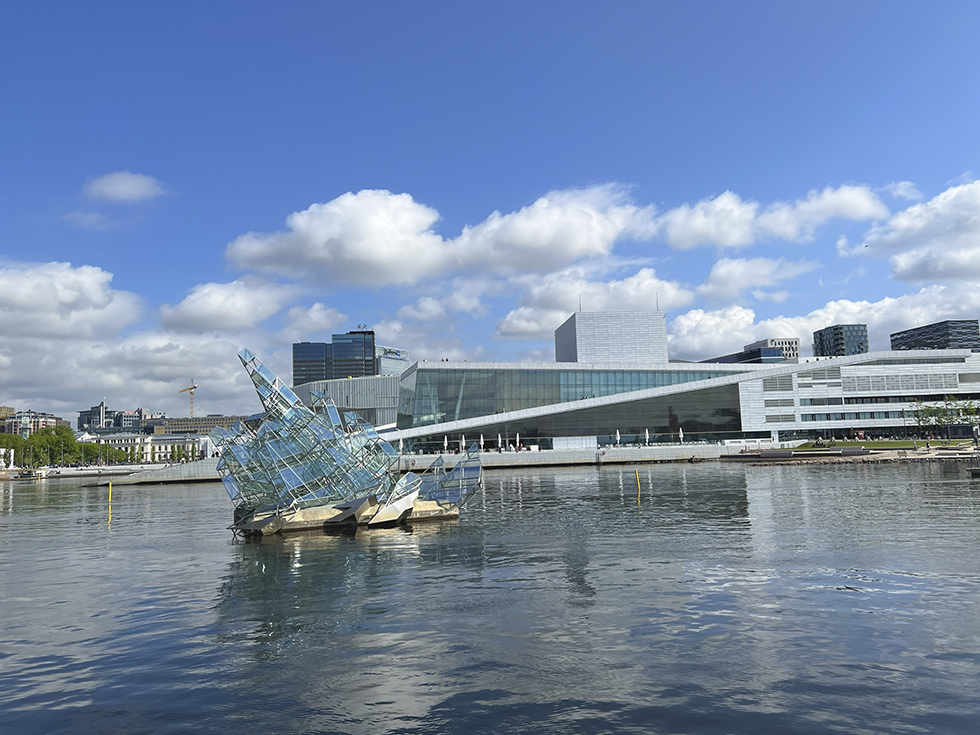

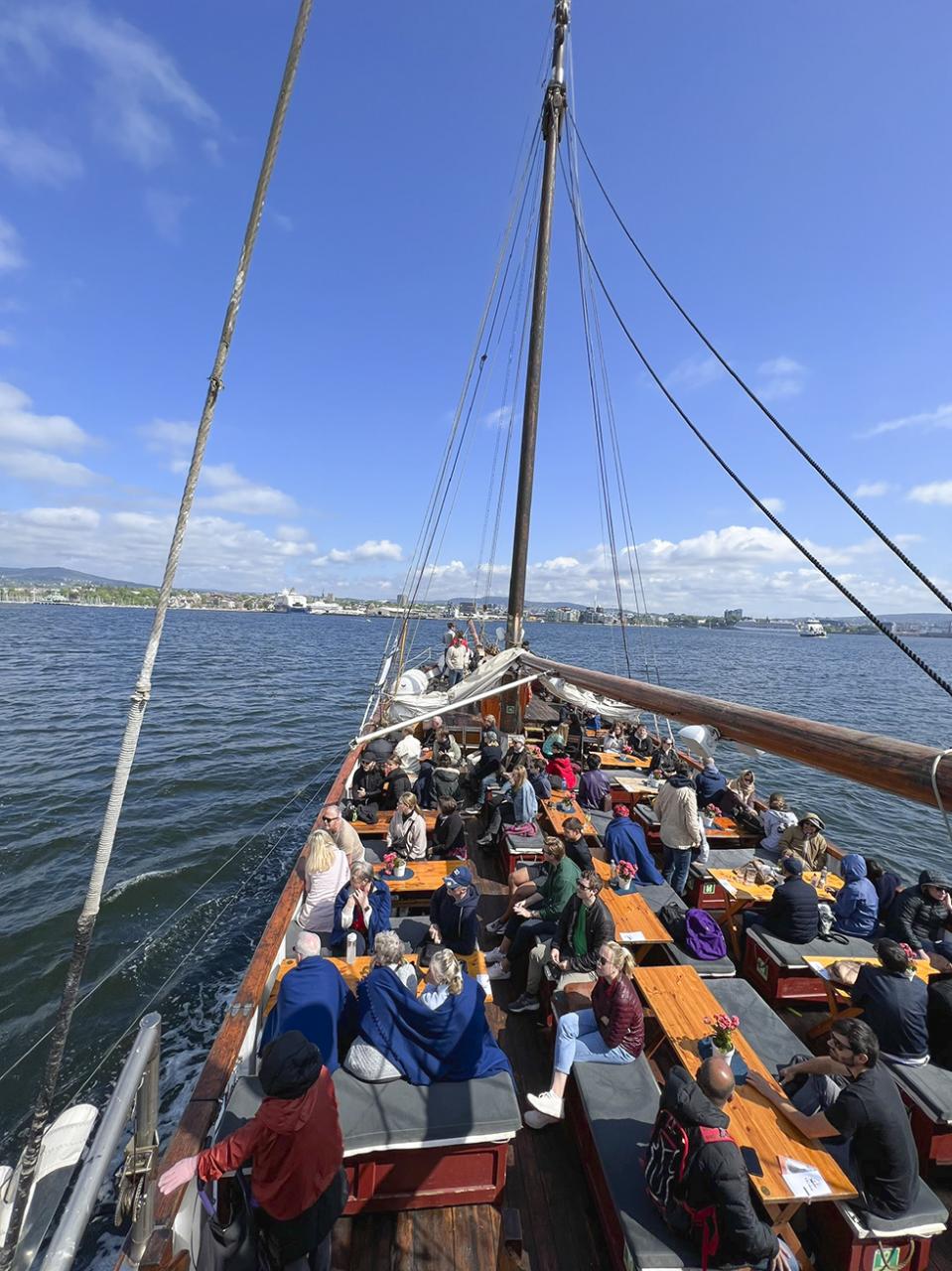
Coming to Oslo, visitors cannot miss boarding a pirate ship to see the capital from the sea.

From Oslo, I went to Gotenberg, Sweden on the afternoon bus, which took about 3 hours and cost 30 euros, as there are no trains along the way. Gotenberg is the second largest city in Sweden, famous for Ericsson phones and Volvo cars.
The reason I went to Gotenberg instead of the capital Stockholm is because it is closer to Oslo and from here I can easily go to Copenhagen, Denmark by train.
I bought train tickets in advance for the entire trip, but it wasn’t easy or cheap. Because Europeans travel more in the summer and tend to not travel far outside Europe, it’s hard to find good times. Rising inflation also makes ticket prices much higher than in pre-pandemic years.
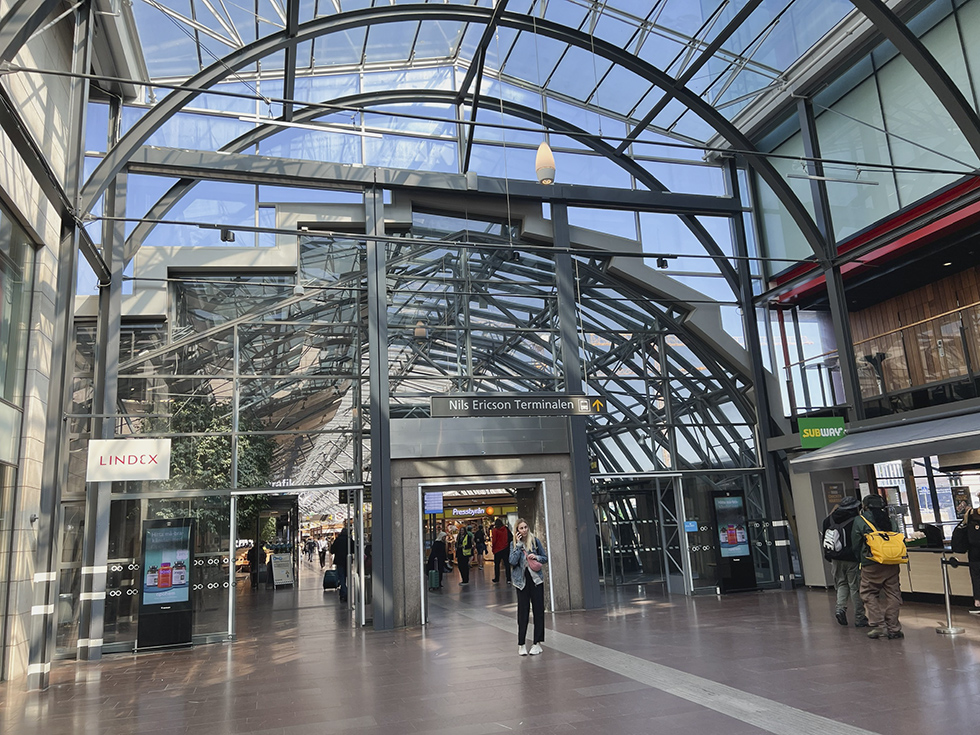
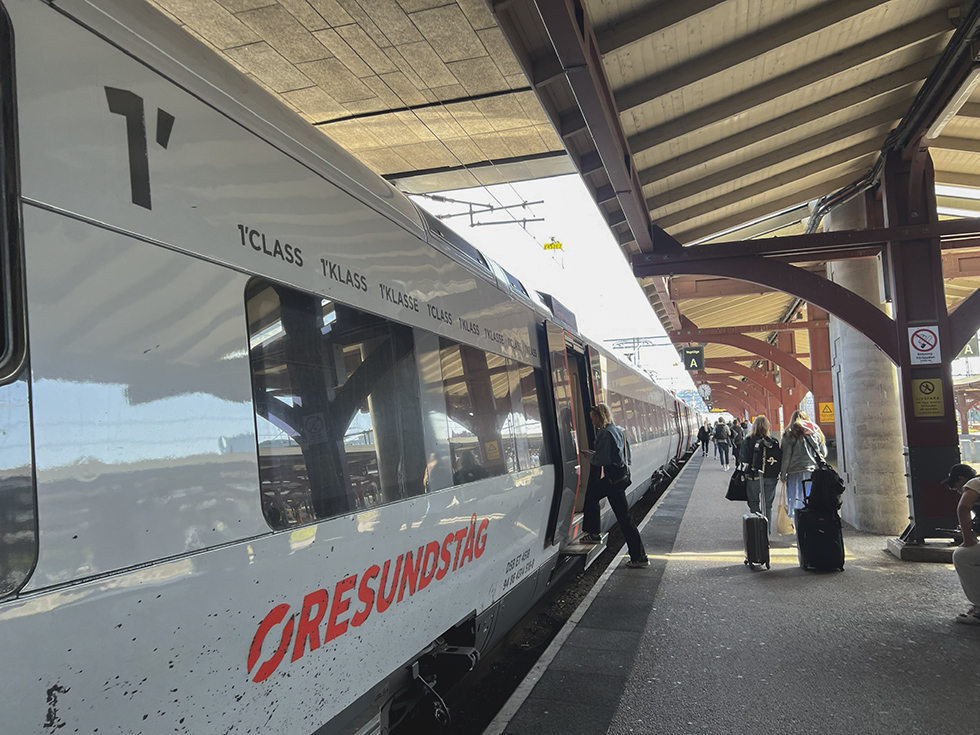
Inside Gotenburg Central Station is the train that takes tourists from Sweden to Denmark.
NT TAM
Most trains connecting countries in Europe have free high-speed wifi. There are rows of 4 seats facing each other, with tables for passengers to work. Fare evasion is impossible on these trains because after each stop to pick up passengers, the train staff checks the tickets again. You can buy a ticket with or without a seat number. If there is no seat number, you can sit wherever you see, but you must return the seat if there is a passenger who has booked a seat in advance.
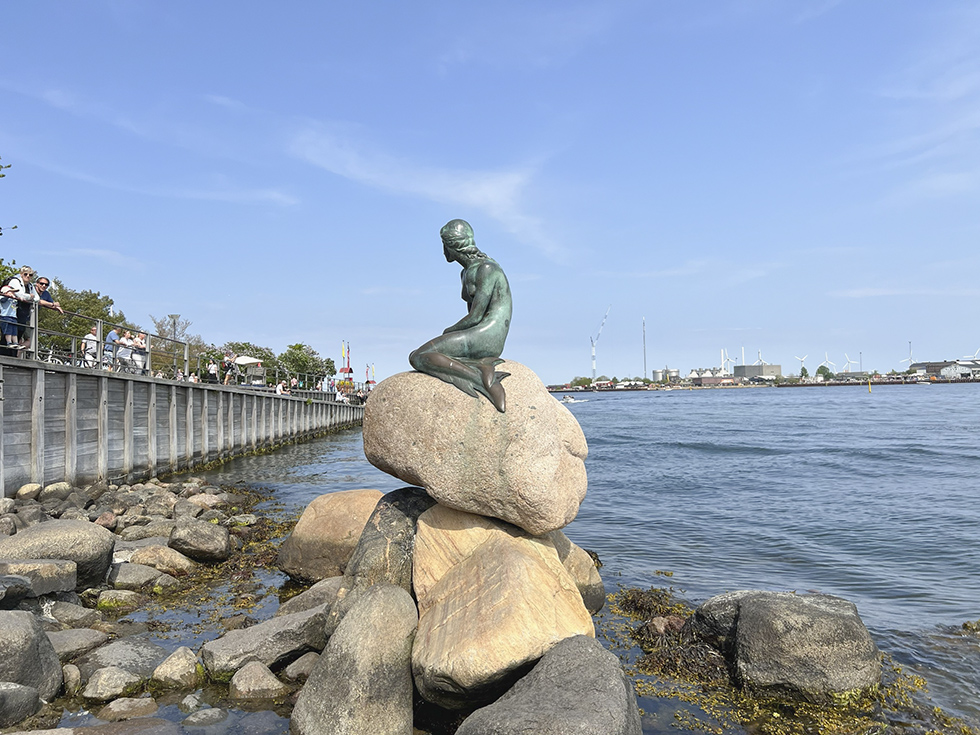
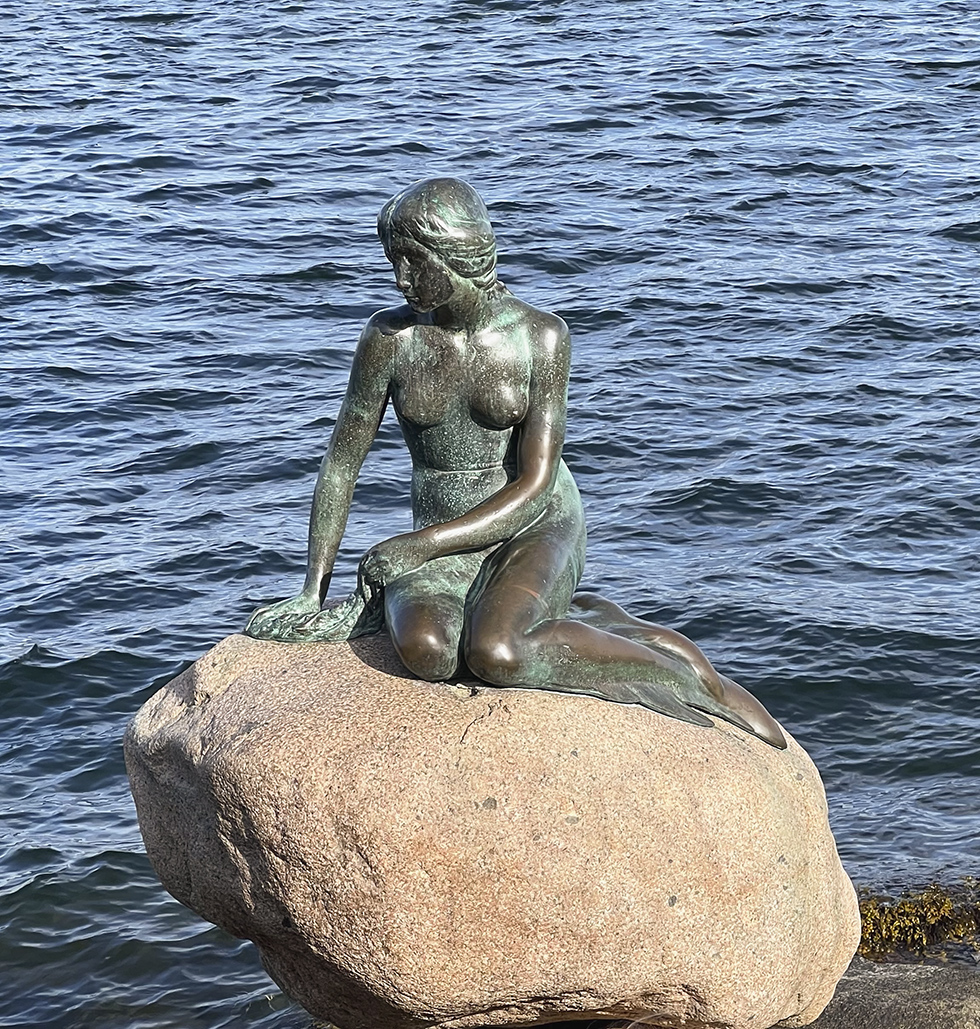
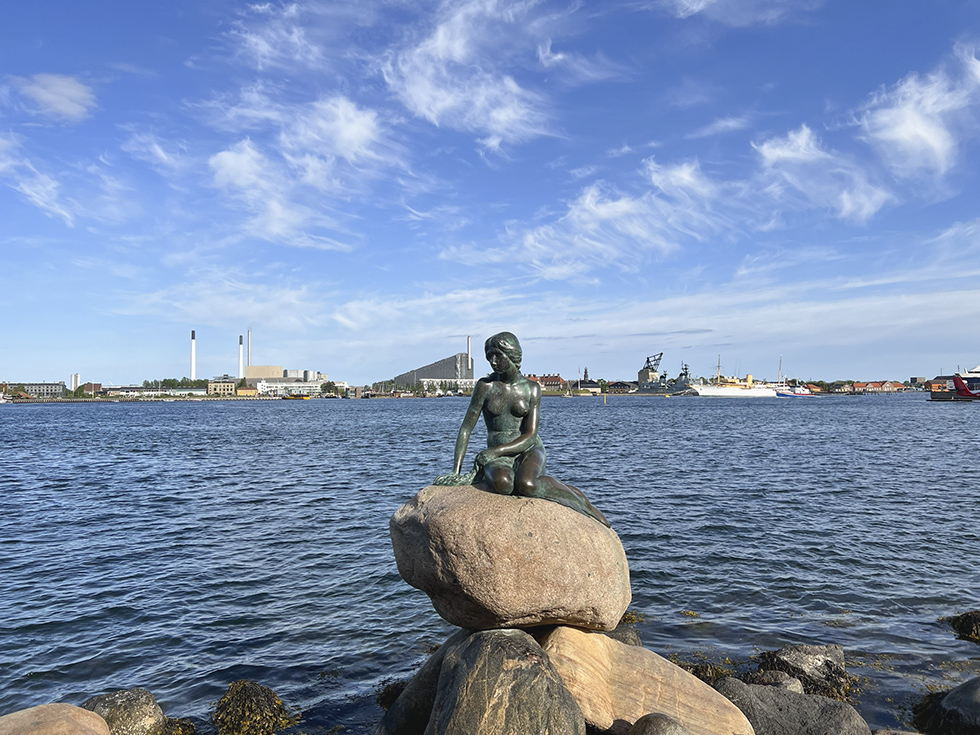
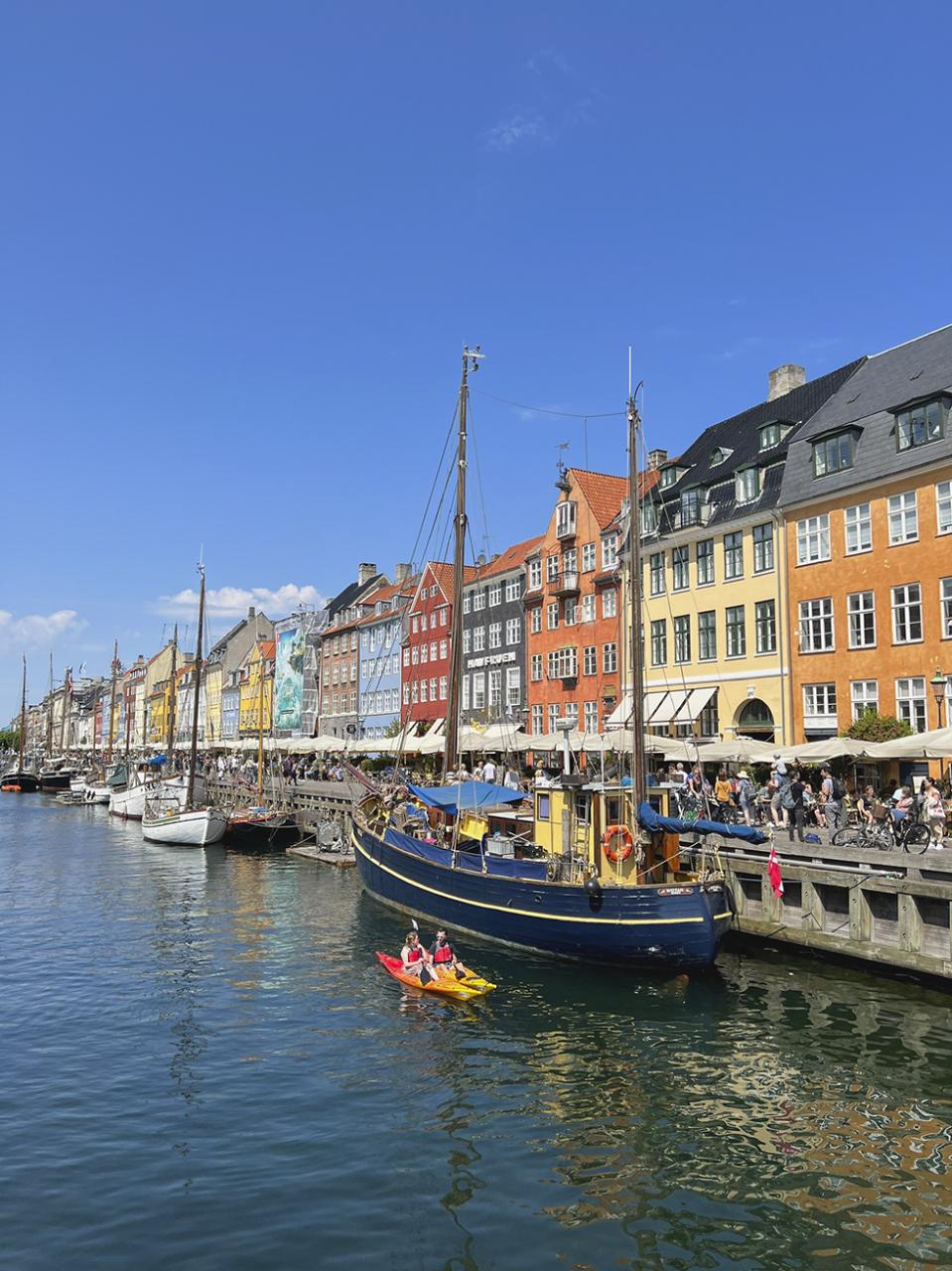
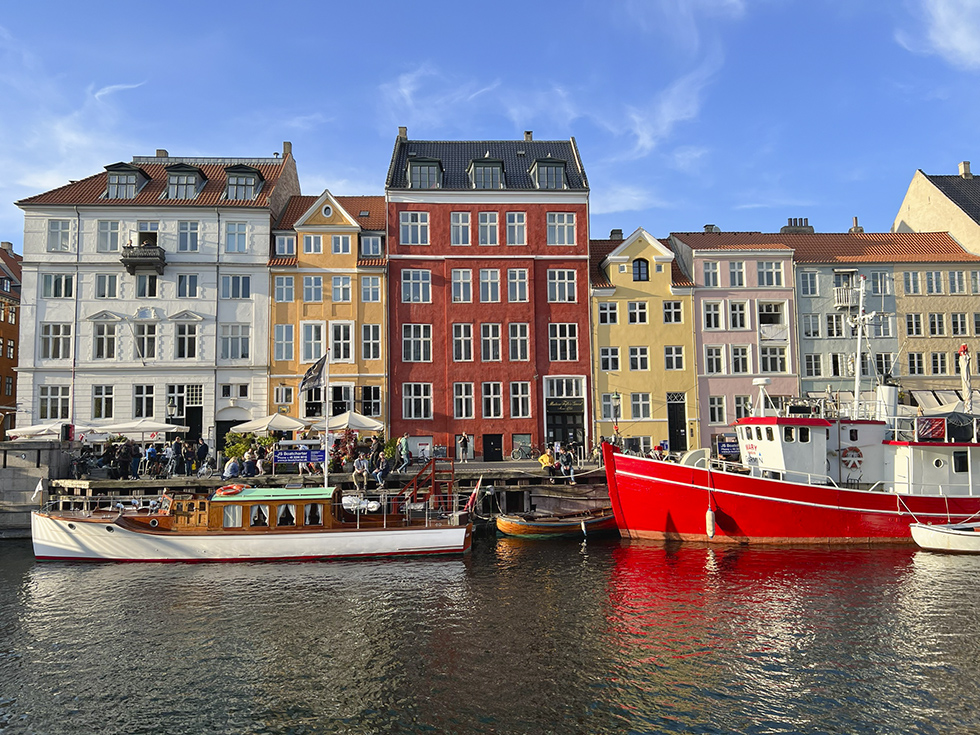
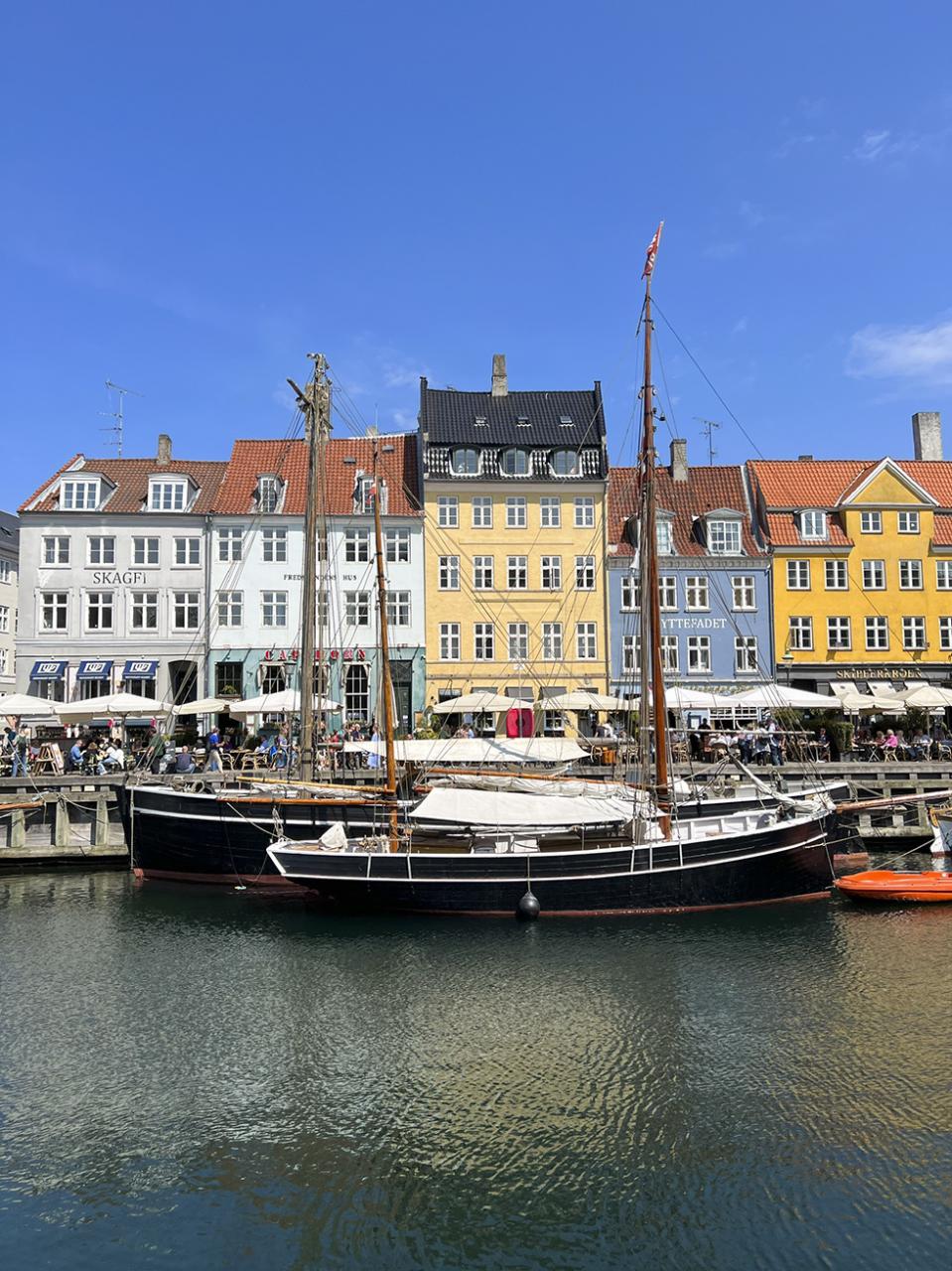
The Little Mermaid and the iconic canal houses in New Port, a must-see for visitors to Copenhagen
In Copenhagen, as in other cities on the trip, I mainly traveled by subway or elevated train. In many train stations in Nordic countries such as Denmark, Sweden, and Norway, there are no barrier-style ticket gates. There is simply a pillar where passengers can enter and exit by touching their train card. If any passenger wants to go in without permission, no one will ask any questions. In the Netherlands, passengers can enter and exit the above-ground trains almost freely. However, ticket inspectors may conduct surprise checks and passengers without tickets can be fined up to 100 euros.
The difference between Northern and Western European trains also lies in security. On Northern European trains, you can freely ignore your belongings, phones or luggage, while on Western European trains such as Italy, France, Germany, Spain, passengers cannot take their eyes off them. There have been many cases where thieves can take your backpack or phone and disappear down to the station in a split second when the train stops.
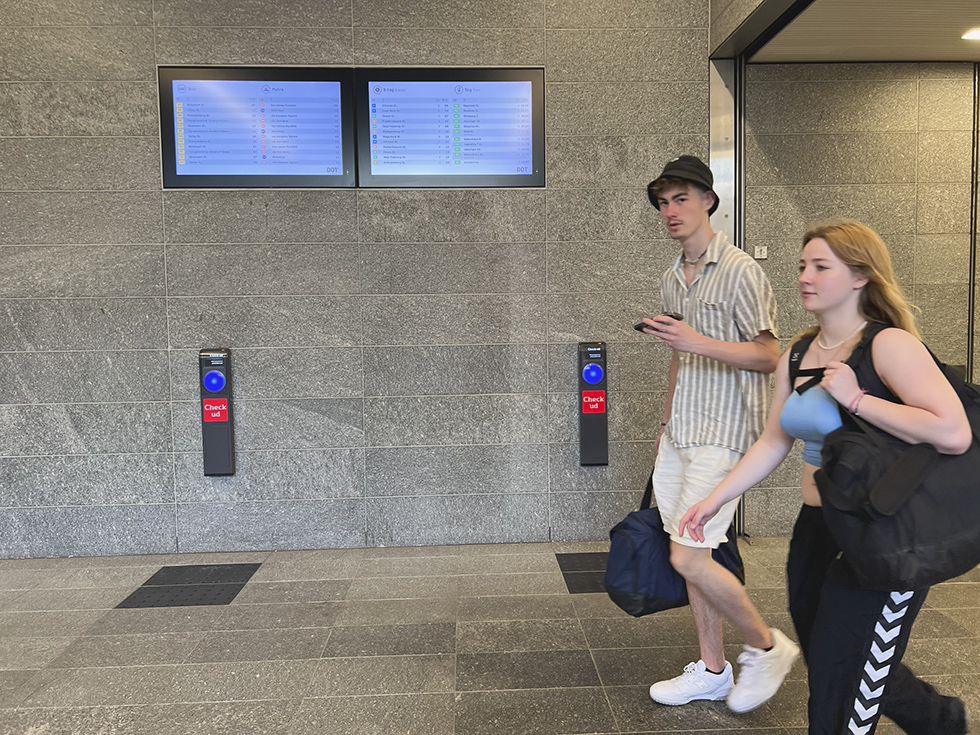
The exit gates at the Copenhagen train station are just two card swipe points mounted on the wall.
NT TAM

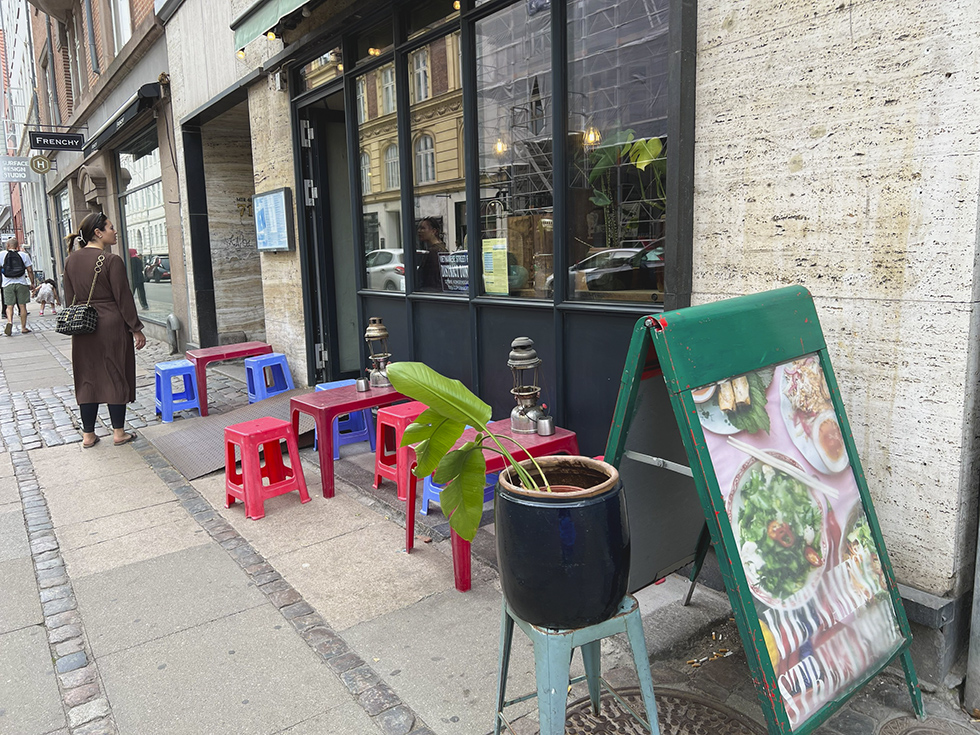
In the capital of Denmark, there are not many Vietnamese restaurants, but this restaurant, located on a street right in the center, surprised me because it put plastic tables and chairs on the sidewalk, and even an oil lamp.

From Denmark, I took a night flight to the Czech Republic for a 2-hour journey, the ticket price was 150 euros. Prague is a summer day but the climate is quite cool, wearing a light coat and walking to Horse Square next to the old town to buy some small items in a convenience store, I met a group of young Vietnamese vendors.
The Vietnamese in the Czech Republic are recognized as a minority. In the central area, the easiest way to speak Vietnamese is to go to a convenience store. This place sells many different things, functioning like a restaurant with a grocery store. In Vietnamese convenience stores, you can eat Vietnamese dishes such as pho noodles, banh mi...
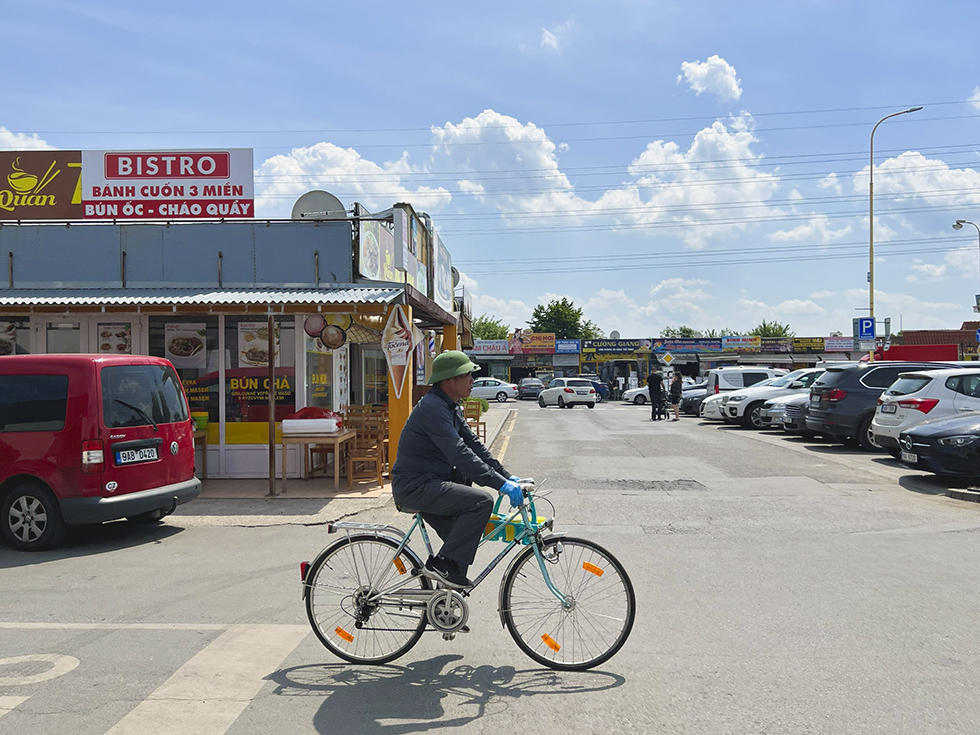
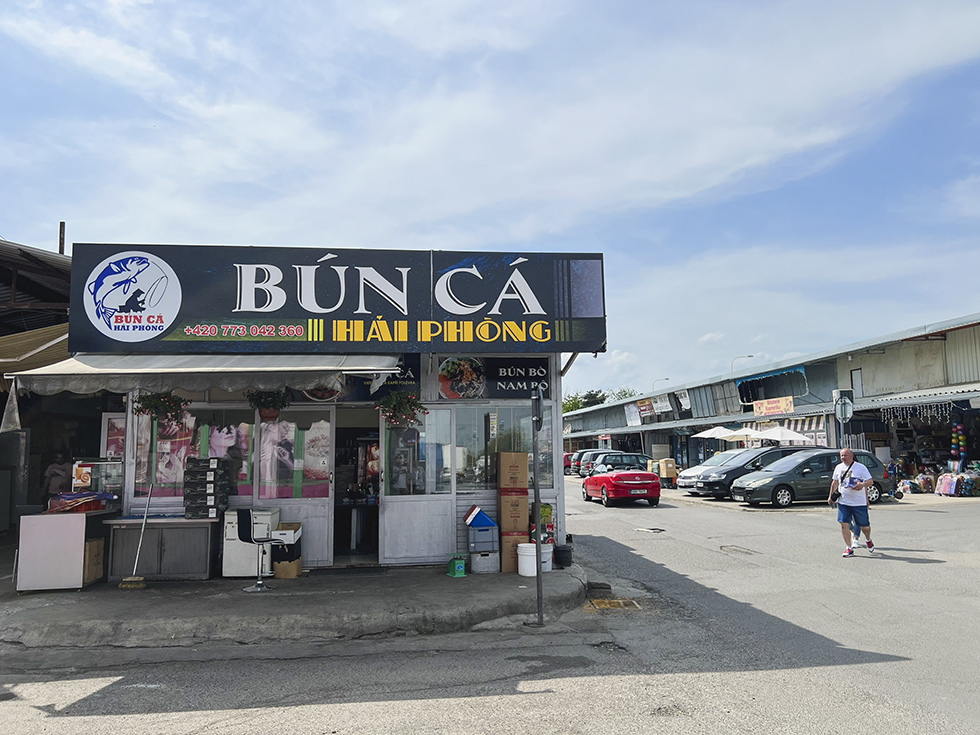
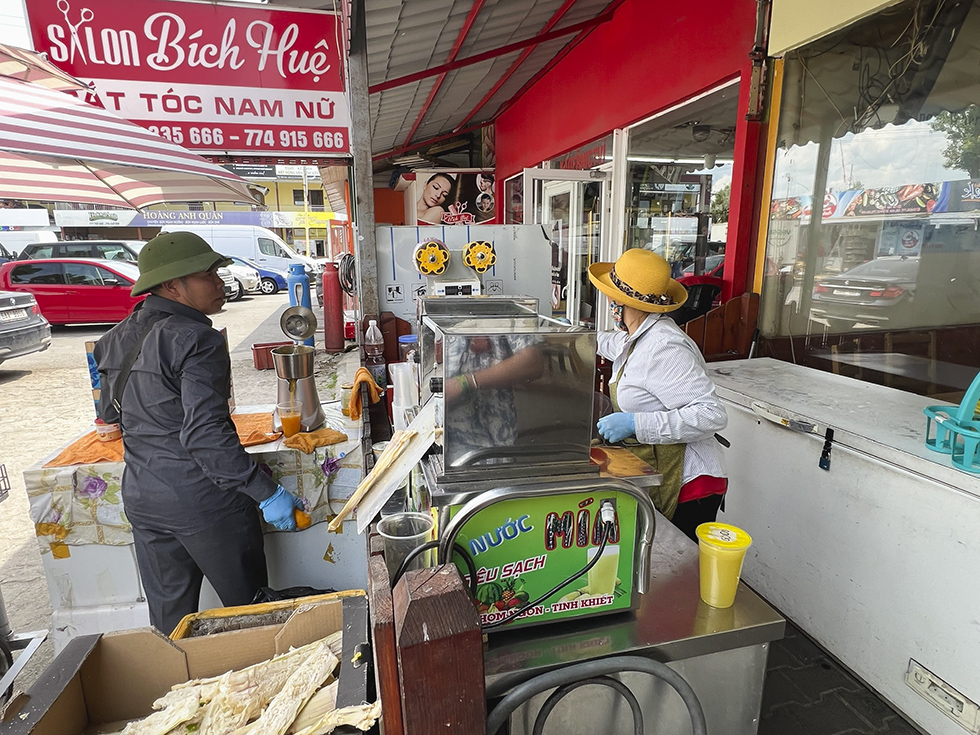
Inside the largest Vietnamese market in Europe, called Sa Pa in the suburbs of Prague, there are all the "standard Vietnamese" dishes such as sugarcane juice, fish noodles, vermicelli with tofu and shrimp paste...
The train from Prague to Frankfurt took 3 hours, cost 80 euros, and was an arduous journey because I had to change trains at the German border with only 2 minutes to spare.
Luckily, I managed to get on the German train. Shortly after the train left, two German policemen appeared to check each passenger's papers. When it was my turn, one policeman checked my passport, the other questioned me about my itinerary, how long I would stay in Germany and when I would return, why I came to Germany... This was the first time in all my days of getting on and off trains in Europe that I had my papers checked by the police, it took longer than when I went through immigration at the French airport.
Normally, the police only check passengers when they go from a poorer country to a richer one. Specifically, here, to prevent illegal immigration from the Czech Republic, Germany has strict controls, or in the case of you going from Poland to Germany, otherwise it is completely free.
Any passenger on the train will have their passport or identity documents checked when entering Germany from the Czech Republic. The police will go from one end of the train to the other and check each person. However, if you are a tourist, the police will question you for a longer time. So, there is no need to panic as long as you have all the necessary documents such as a return ticket or a visa...
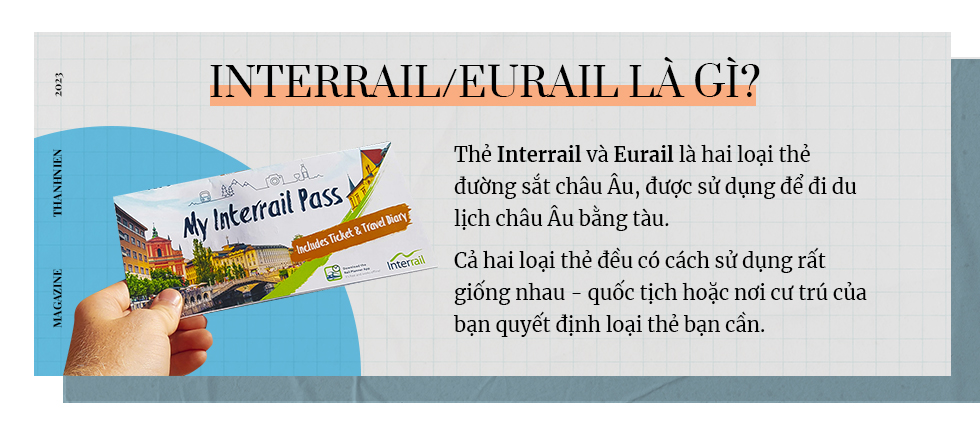
Thanhnien.vn


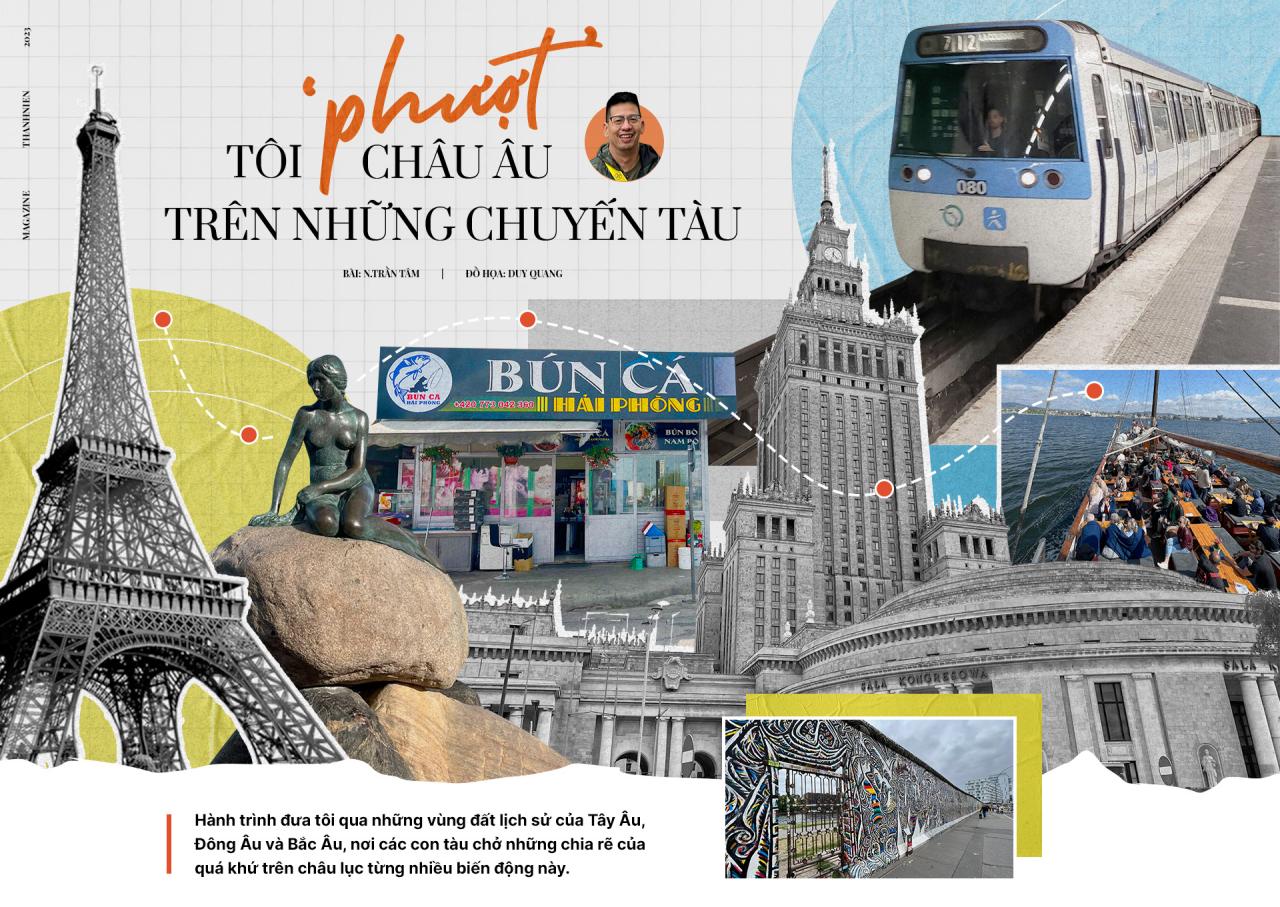
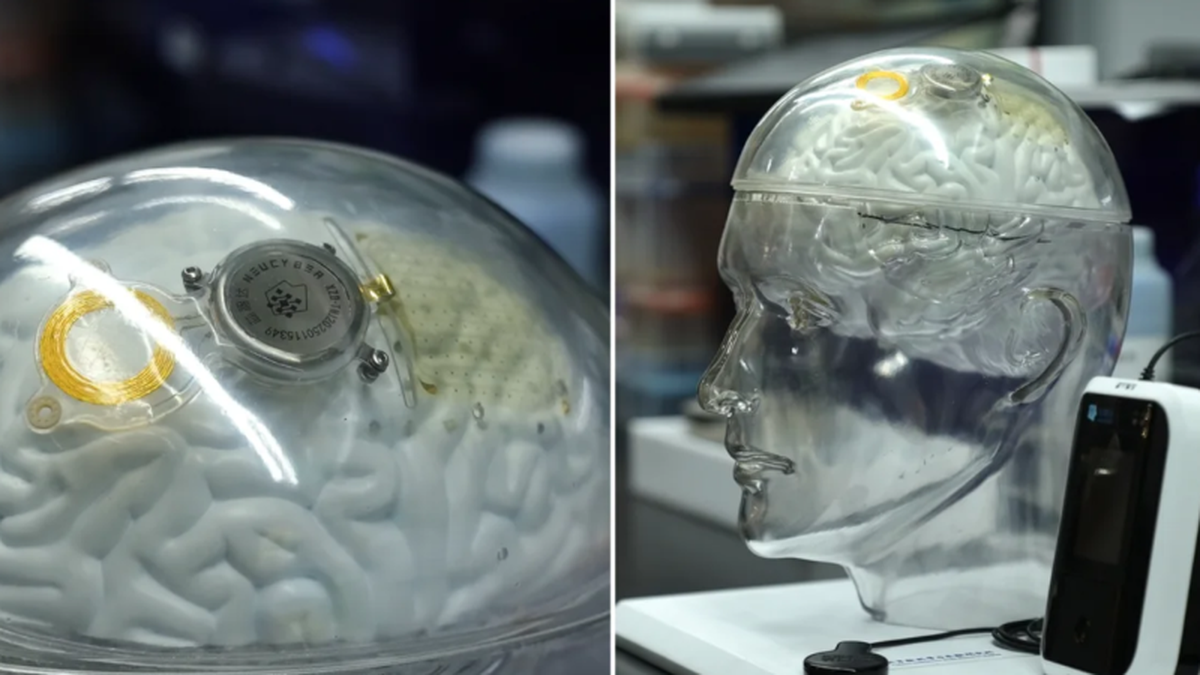








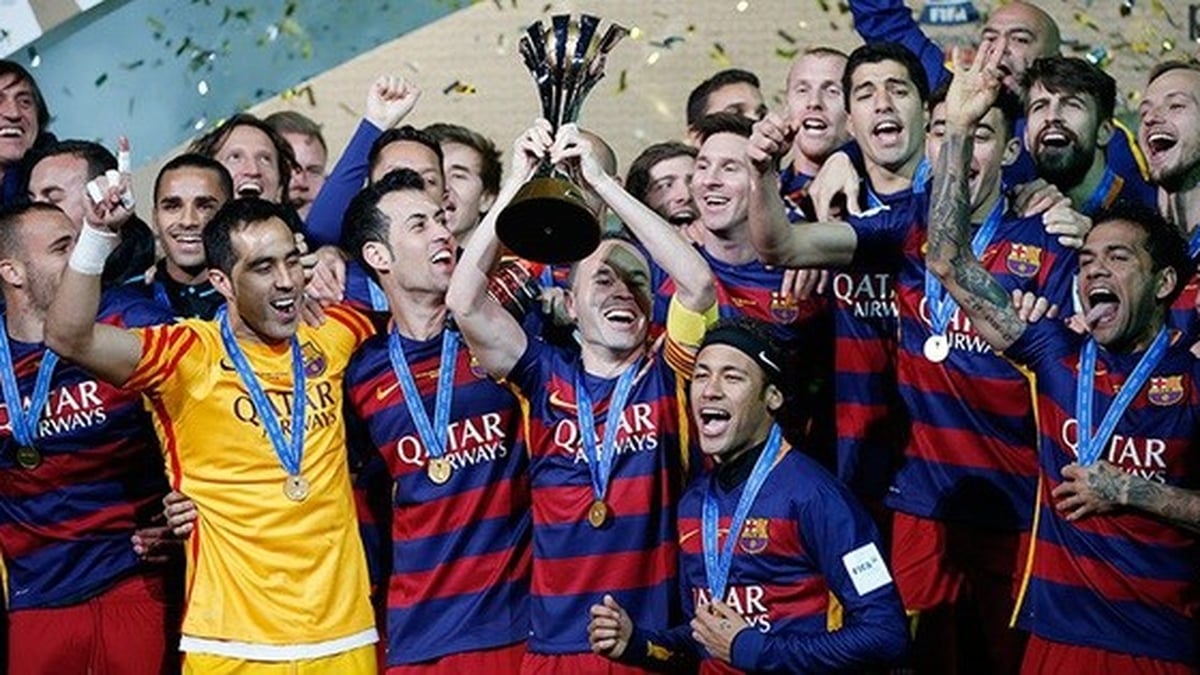



















![[Photo] National Assembly Chairman Tran Thanh Man visits Vietnamese Heroic Mother Ta Thi Tran](https://vphoto.vietnam.vn/thumb/1200x675/vietnam/resource/IMAGE/2025/7/20/765c0bd057dd44ad83ab89fe0255b783)
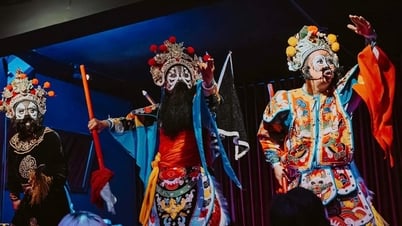

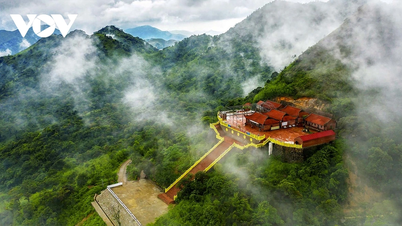



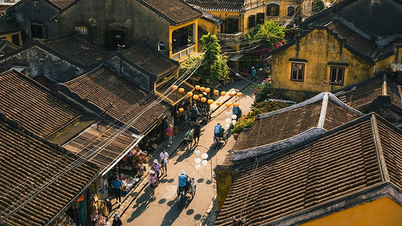



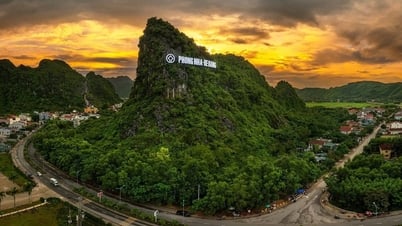



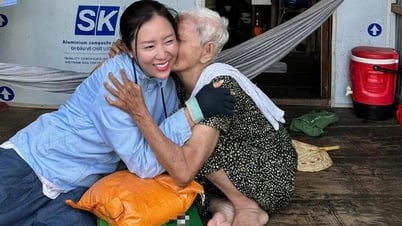




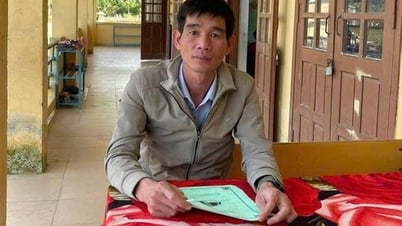




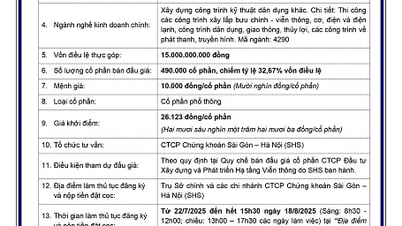
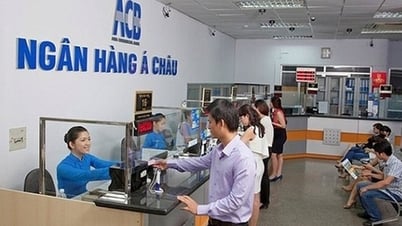




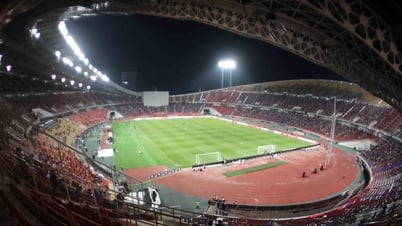

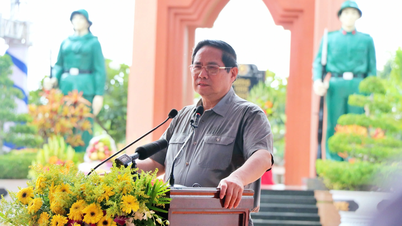
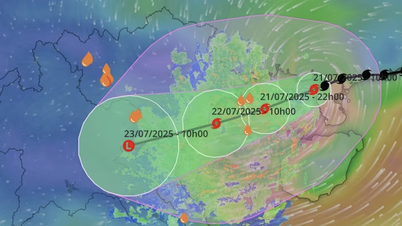

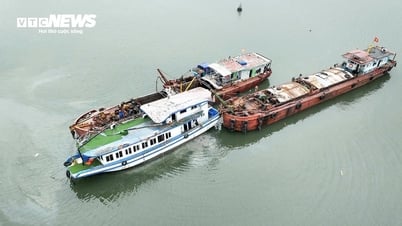


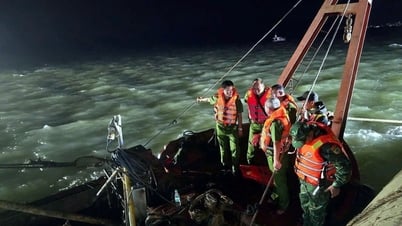




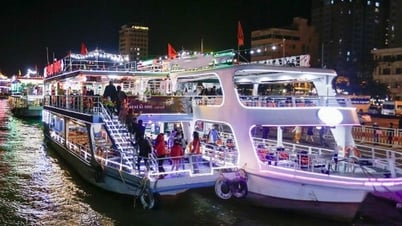



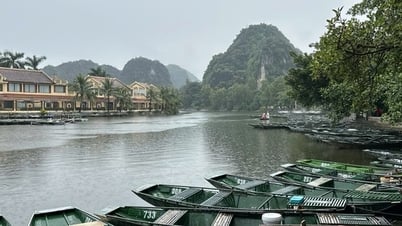

















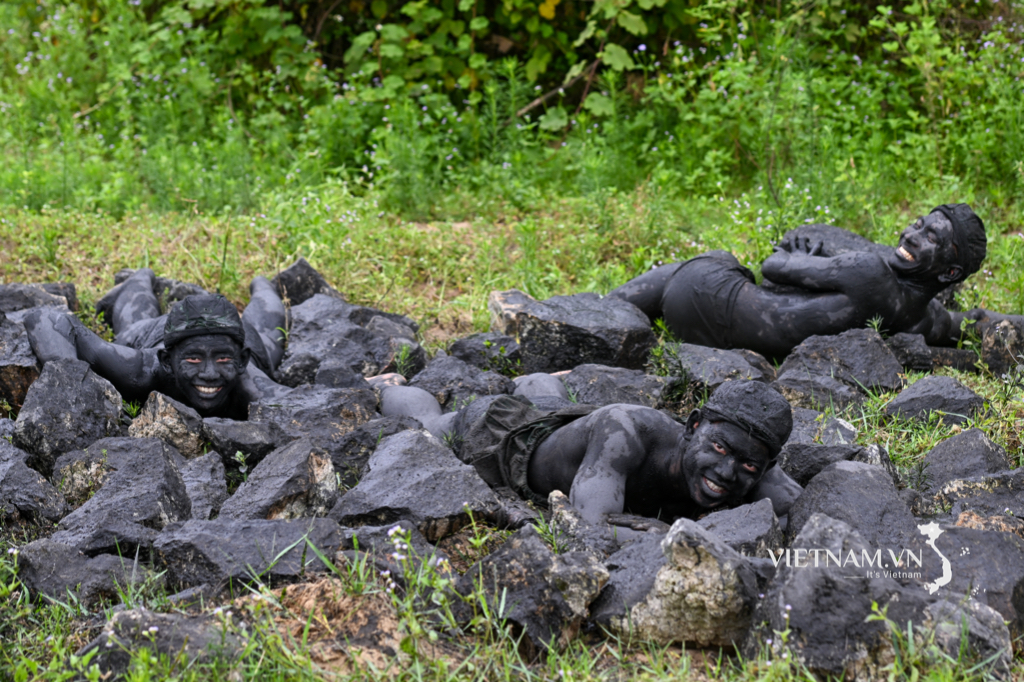



Comment (0)